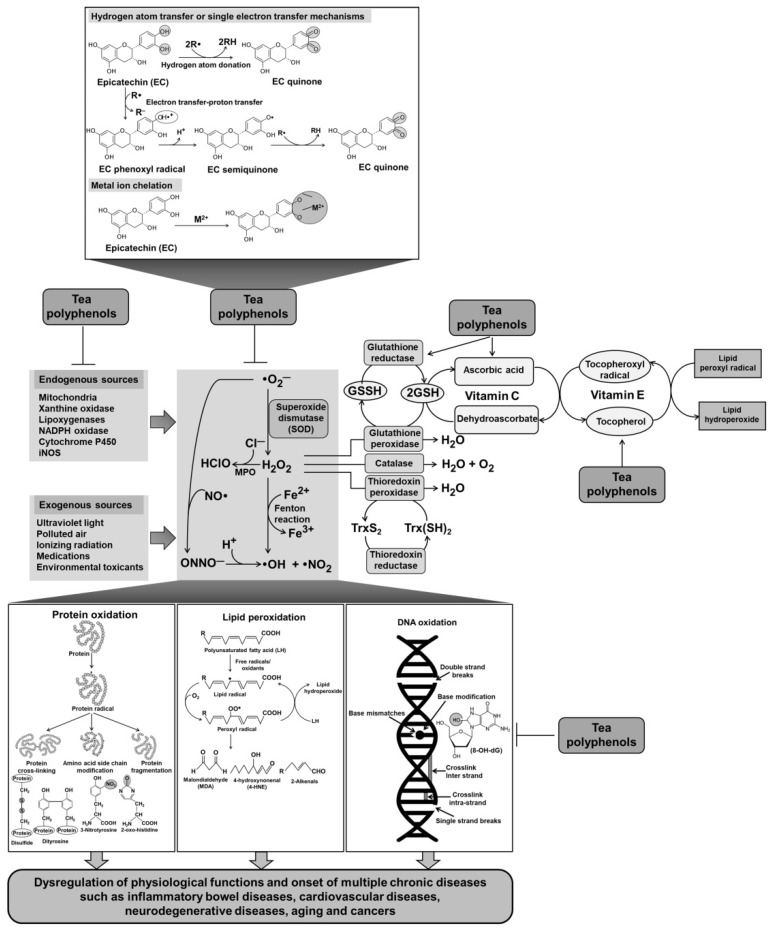Figure 2.
Scheme showing ROS/RNS formation and possible antioxidant mechanisms of tea polyphenols. ROS/RNS can be produced by endogenous sources (e.g., mitochondria, xanthine oxidase, lipoxygenase, NADPH oxidase, cytochrome P450, and inducible nitric oxide synthase) and exogenous sources (e.g., ultraviolet light, polluted air, ionizing radiation, medications, and environmental toxicants). Under normal conditions, ROS/RNS are scavenged and neutralized by intracellular antioxidant defense systems, including enzymatic antioxidants (e.g., superoxide dismutase, catalase, glutathione peroxidase, and thioredoxin peroxidase) and nonenzymatic antioxidants (e.g., vitamin C and vitamin E). However, oxidative/nitrosative stress is associated with an overproduction of ROS/RNS that attacks cellular biomolecules such as proteins, lipids, and DNA, thereby resulting in the dysregulation of normal physiological functions and the onset of multiple chronic disorders such as cardiovascular diseases, inflammatory bowel diseases, and cancers. Tea polyphenols can inhibit ROS/RNS formation, scavenge and neutralize radicals and oxidants, upregulate intracellular antioxidant defense systems, and suppress oxidative/nitrosative biomolecule damages, thereby preventing the development of diseases. MPO, Myeloperoxidase; iNOS, Inducible nitric oxide synthase; O2, oxygen; O2•−, Superoxide anion; H2O2, Hydrogen peroxide; •OH, Hydroxyl radical; •NO, Nitric oxide; •NO2, Nitrogen dioxide; ONOO−, Peroxynitrite; HClO, Hypochlorous acid; GSH, Glutathione; GSSG, Glutathione disulfide; Trx, Thioredoxin.

